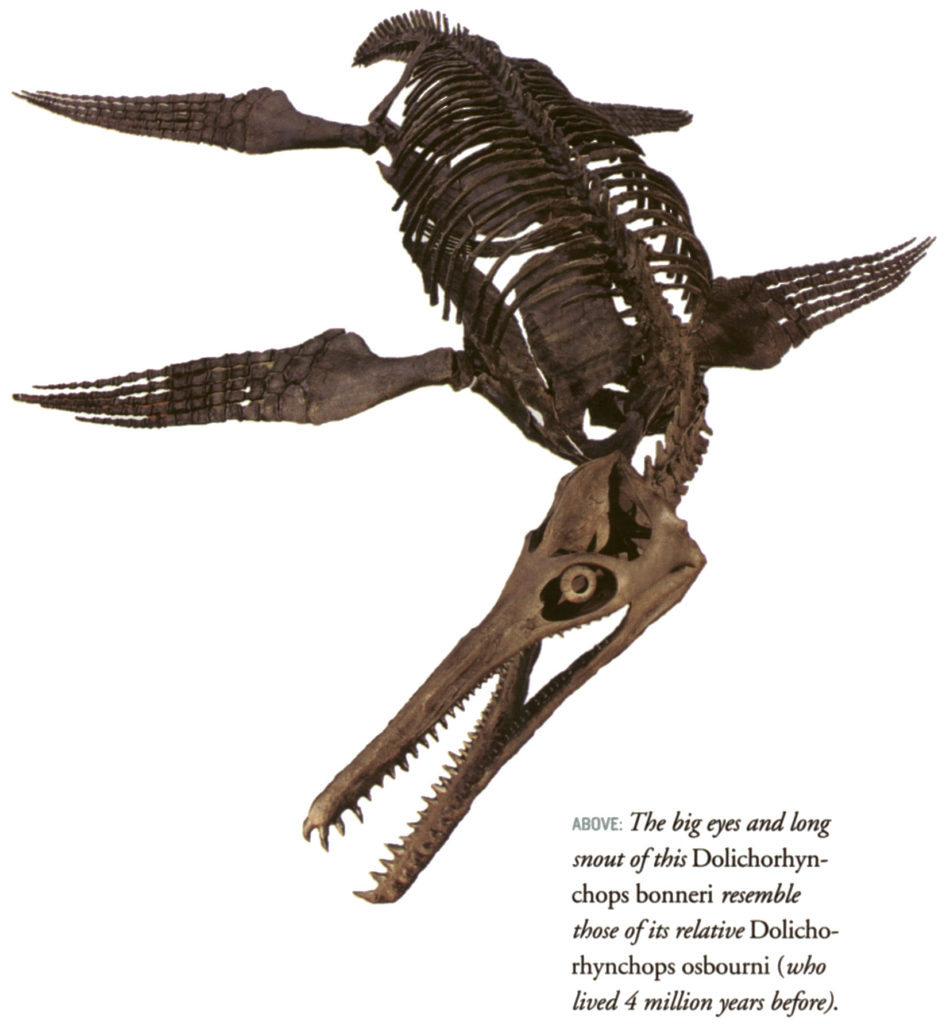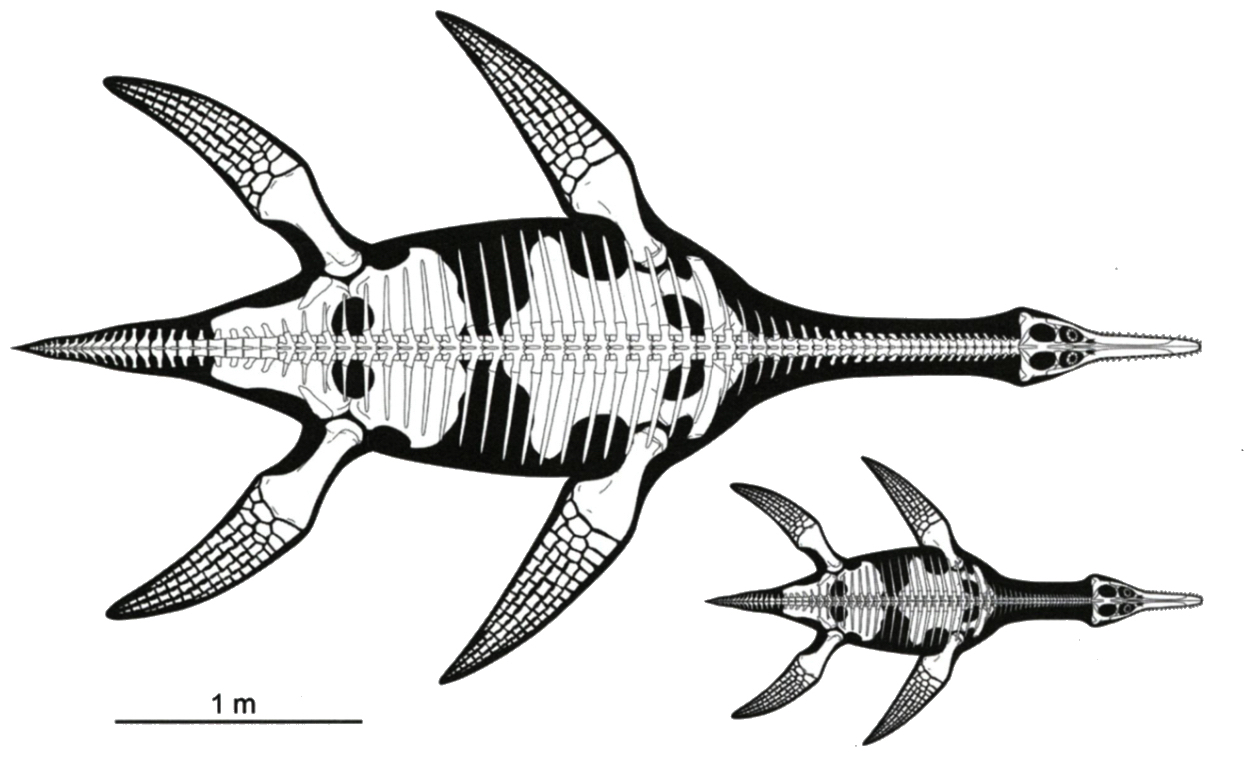Polycotylidae

Polycotylids have been traditionally classified as pliosaurs because of their short necks and relatively large heads. However, cladistic analyses that take into account a broader suite of anatomical characters have revealed that they are probably plesiosauroids, and therefore more closely related to the long-necked elasmosaurids and cryptoclidids than to pliosaurs.

All polycotylids share a number of features including an elongate rostrum and short postorbital region. They had a worldwide distribution in the Cretaceous Period.
Polycotylid genera

Polycotylus
Polycotylus latipinnis was the first short-necked plesiosaur to be recognised in North America (Carpenter 1996), and the first polycotylid to be described and named (Cope 1869). It was established in the same volume that coined the name Elasmosaurus and contained the infamous ‘head on the wrong end’ reconstruction (Cope 1869).
Genera not yet added to the directory:
- Dolichorhynchops
- Eopolycotylus
- Georgiasaurus
- Umoonasaurus
- Pahasapasaurus
- Palmulina
- Sulcusuchus
- Trinacromerum


